(Continued from last
page so the photos upload faster . . . )LATE
SPRING BLOOMS IN OUR YARD (early May)
There are several delicate flowers that definitely thrill me to the
edges of my soul, and bearded irises are one of them.
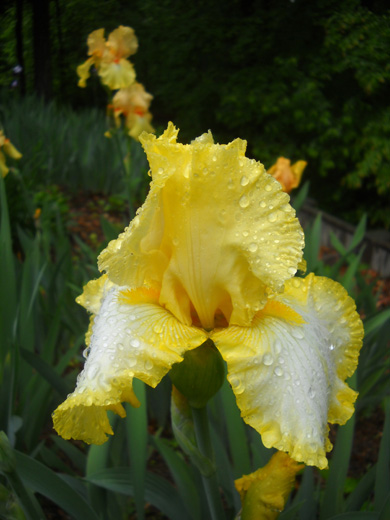
We had no idea when we purchased our property in the Roanoke area
seven years ago that the large flower bed was full of bearded irises. We
initially saw the place in March when the daffodils were blooming and
signed an offer to buy that day or the next.
We assumed there were other flowers in the large beds and wondered
what else would come up throughout the year.
It wasn't until we closed on the property and moved in May that we
realized we'd inherited hundreds of gorgeous bearded irises, too! It was
fun to see the wide variety of flowers that appeared the rest of the
year.
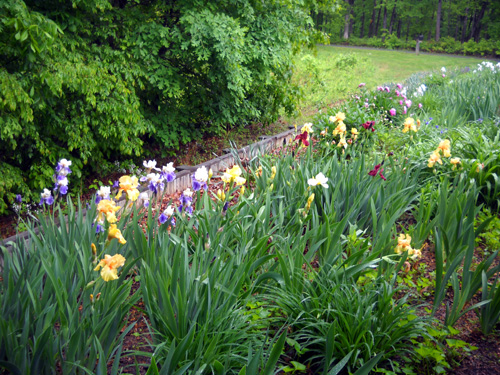
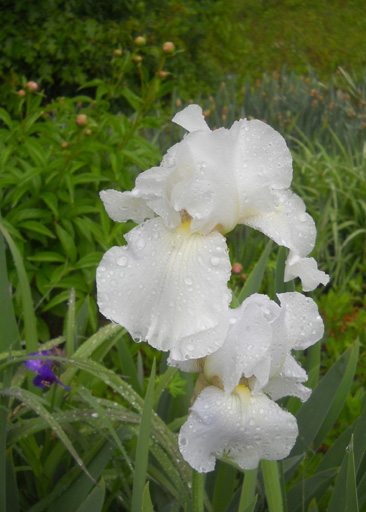
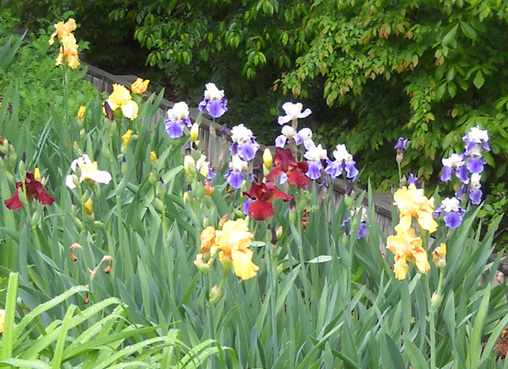
Bearded iris are fairly expensive bulbs if you want to purchase them at a
garden shop
or farmers' market. We haven't had to buy any, thankfully, even though I
haven't done much of anything to preserve them except divide a few of
them occasionally and keep them lightly mulched. Irises sit almost on
top of the soil; they don't like wet feet and they don't like to
be buried in the dirt.
The previous owners apparently chose the perfect conditions for them.
They haven't remained alive the last seven years simply because of my
gardening skills! I have a fair amount of gardening knowledge but I
haven't been around consistently to take care of our yard as well as it
deserves.
Also blooming in late April and early May in this bed are a couple of
other types of irises, some pretty blue spiderworts, lots of violets,
and three kinds of peonies. Those are all flowers that came originally
with the property, too.
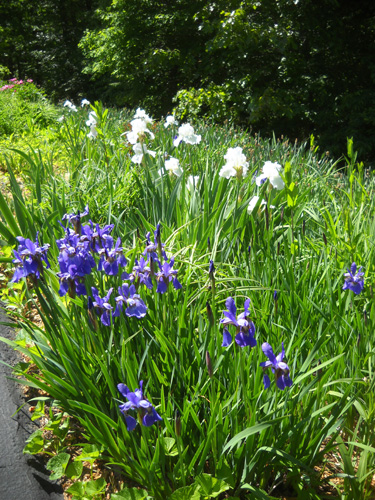
Above and below: these blue
irises aren't quite as elaborate as our bearded irises.
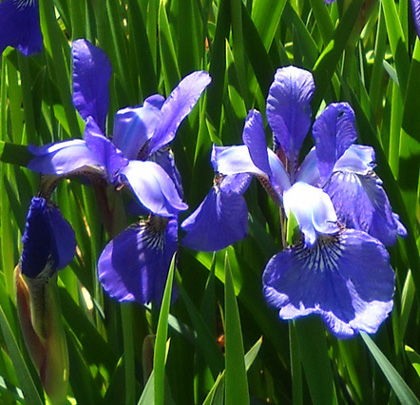
Only one of the peonies is in full bloom now:
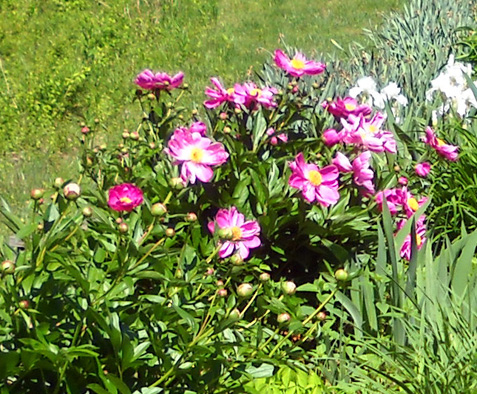
We'll miss the
flowers on the other two peonies this spring. Their buds are still tightly closed and we're
leaving town in two days.
This is one of the peonies that hasn't started blooming yet this
year. I took this photo May 10, 2004:
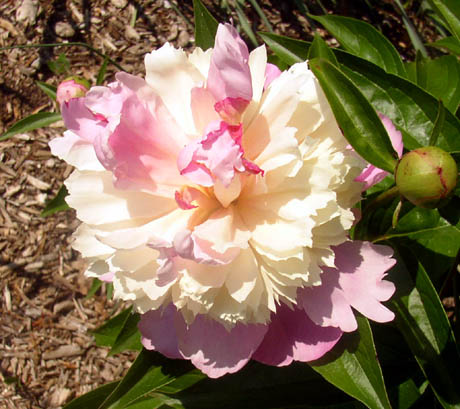
It has bloomed just as beautifully ever since -- again, without any
assistance on my part other than cutting back the stems in the fall and
giving them a little bit of fertilizer in the spring when I remember to
do it.
The next photo shows a clump of daylilies in the background (they'll
bloom in different colors in June), a rose bush with reddish leaves that I planted several
years ago (should bloom June to September), violets covering the ground, and some blue spiderwort
on the right (also should bloom through the fall):
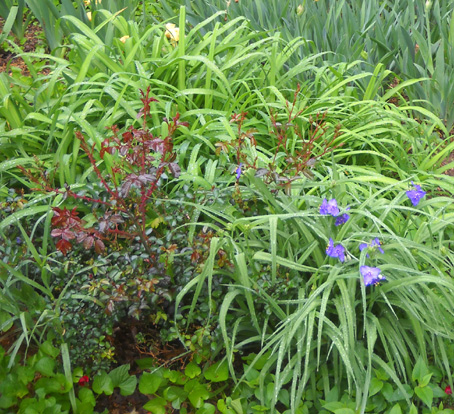
Spiderwort is a pretty cool plant.
It produces the most flowers in the spring and fall but
will bloom continuously all summer with enough moisture. Each individual flower
blooms for only one morning; each stem can produce up to twenty
flowers during the blooming season.
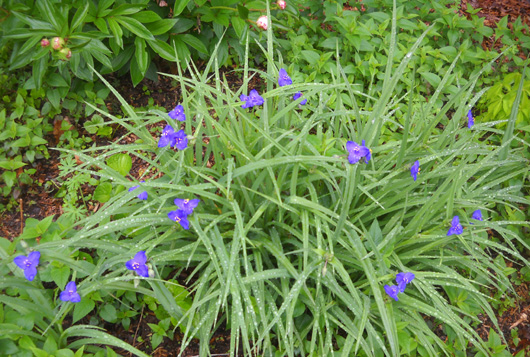
Behind the spiderwort is one of
the peonies whose buds haven't opened yet. (5-5-11)
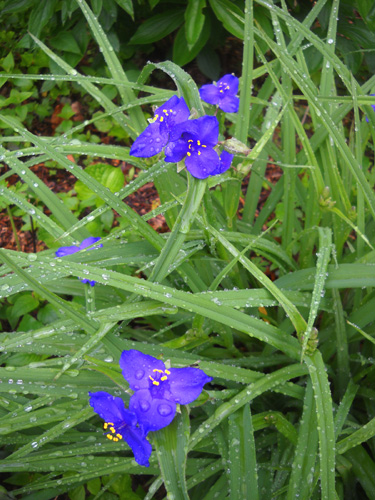
Close-up of spiderwort after some
rain
Spiderwort comes in several colors and grows all in many
states.
WEED WATCH
Weeds are the bane of my gardening existence.
One Very Good Thing when we return to Virginia in the spring is that
most of the weeds have died out during the winter while we've been gone.
Unlike our returns in the fall, I don't have to spend weeks in March or
April pulling weeds from our large perennial flower beds. About an hour
a week is all it takes, and it's good therapy.
It's so much simpler to keep the weeds at bay when I'm there and not
out playing in the Rockies.
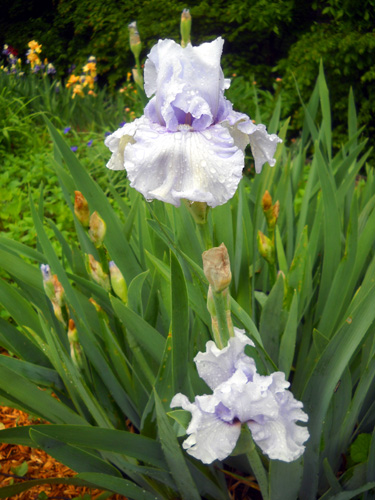
I've never found a good solution to our summer weed problem. The
kindly neighbor who mows our lawn is willing to pull out the worst
offenders but he isn't able to control all the weeds that take over in this
warm, humid environment. We'd never ask him to, either.
We are too cheap to hire a professional
landscape service to do it. And because of all the perennial seeds and
bulbs, landscape fabrics and most weed killers like sprays and systemic
weed killers aren't suitable; they'd kill the plants we want to
grow, too.
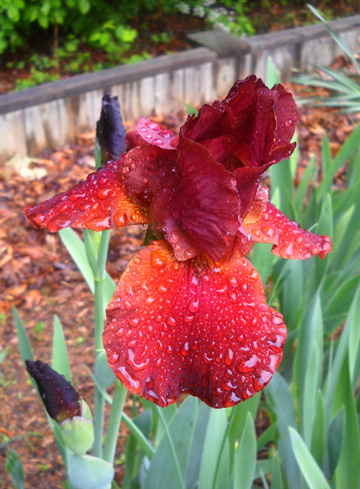
The best I have been able to do is pull as many weeds as possible
before we leave town each spring and put down several inches of mulch.
We still return to find tons of weeds every fall. I've decided that
weeds thrive in mulch. <sigh>
But maybe I've hit on a better way this spring. Let's hope.
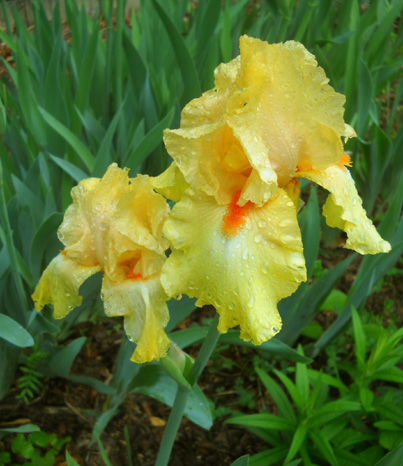
Soon after we got back to Roanoke I got my hair permed.
That's a quarterly ritual I go through to have curly, wash-and-wear hair
that's easy to take care of.
My hairdresser is also an avid gardener. When I was talking about the
garden projects I'd be doing this spring she mentioned a granular Preen
weed preventer she uses to reduce the number of weeds in her gardens.
She sprinkles it on the soil in her flower beds periodically during the
spring and summer. She swears the product really works well to prevent
most weed seeds from germinating, and she encouraged me to try it.
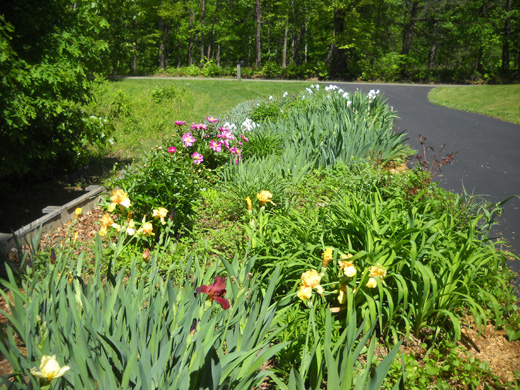
The next time I was at Walmart I read the verbiage on the Preen Weed
Preventer bags and ended up buying the largest size in the store. Sounded
good to me! I applied some at the end of March after pulling out most of
the weeds, and again today.
I used up most of that big bag. Fingers crossed . . .
Ironically, one of the plants I consider to be a weed is crown vetch.
It makes a terrific ground cover with its pretty purple flowers, airy
fern-like leaves, and thick growth, but the stuff has invaded one of our
flower beds and is impossible to eradicate! This weed preventer doesn't
kill crown vetch so I have to continue to dig it out in the places I
don't want it.
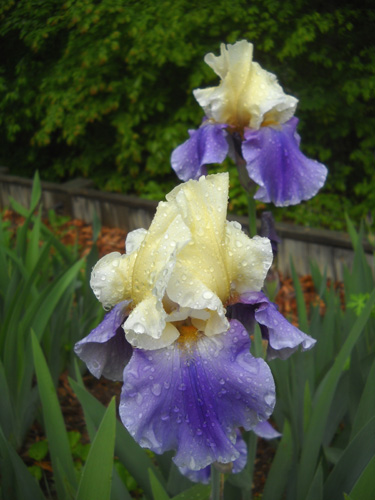
Violets, on the other hand, are welcome in our gardens and even our
lawn. I love them. Some people consider violets to be weeds. Weeds are
in the eye of the beholder, obviously.
I spent a couple hours one day transplanting a bunch of violets near
the woodpile to a nearby bed with other violets, bleeding hearts, and
hostas:
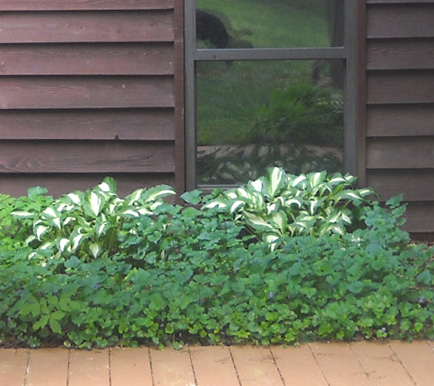
Violets make a great groundcover
under the steps leading up to the deck.
Lizards, turtles, frogs, and
(probably) snakes love this moist, shady area.
I wanted to cover the dirt around the woodpile with mulch to make it
more attractive. I dug up the violets so they wouldn't be covered, too.
That's how much I like violets!
Home Depot had a 2-for-1 sale on mulch recently and we
couldn't resist filling up the bed of the truck with bags of the stuff.
We could have easily used another truckload or two or three of mulch to add to
the mulch that has deteriorated in our beds, but we were running out of
time by then.
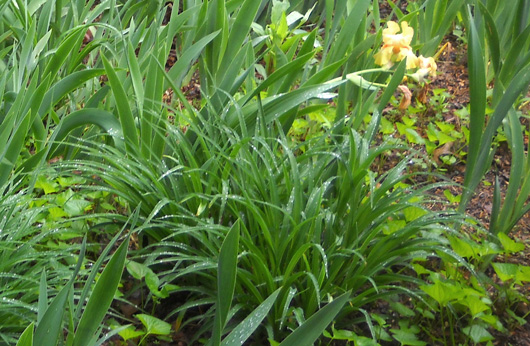
As these violets spread they will form a thicker
groundcover under the daylilies, irises,
and other perennials and make it harder for weeds
to take root.
What about dandelions??
That's another plant that is a weed in one place but a flower in
another. It's all in the context.
I think dandelions look fine on the trails I hike all over the country
-- they add cheery, sunny color to the landscape -- but I don't
want them in my flower beds or grass. I've been digging up dandelions
(wild onions, etc.) at our place for the last six weeks. We
didn't catch them in time with the garden weed preventer or lawn
chemicals.
Next entry: springtime on the trails near Roanoke --
dandelions are just fine out there!
Happy trails,
Sue
"Runtrails & Company" - Sue Norwood, Jim O'Neil,
and Cody the Ultra Lab
Previous
Next
© 2011 Sue Norwood and Jim O'Neil


















